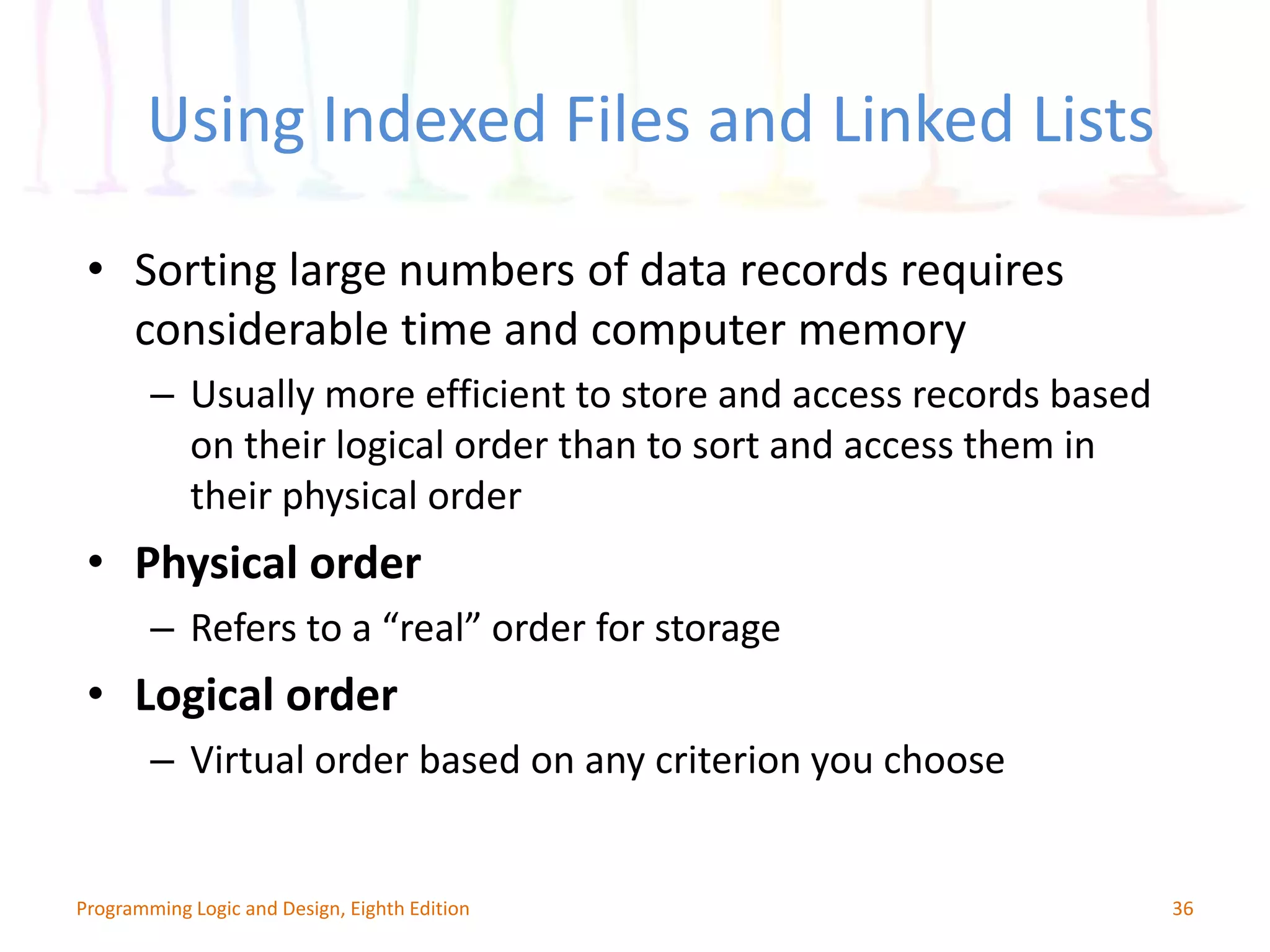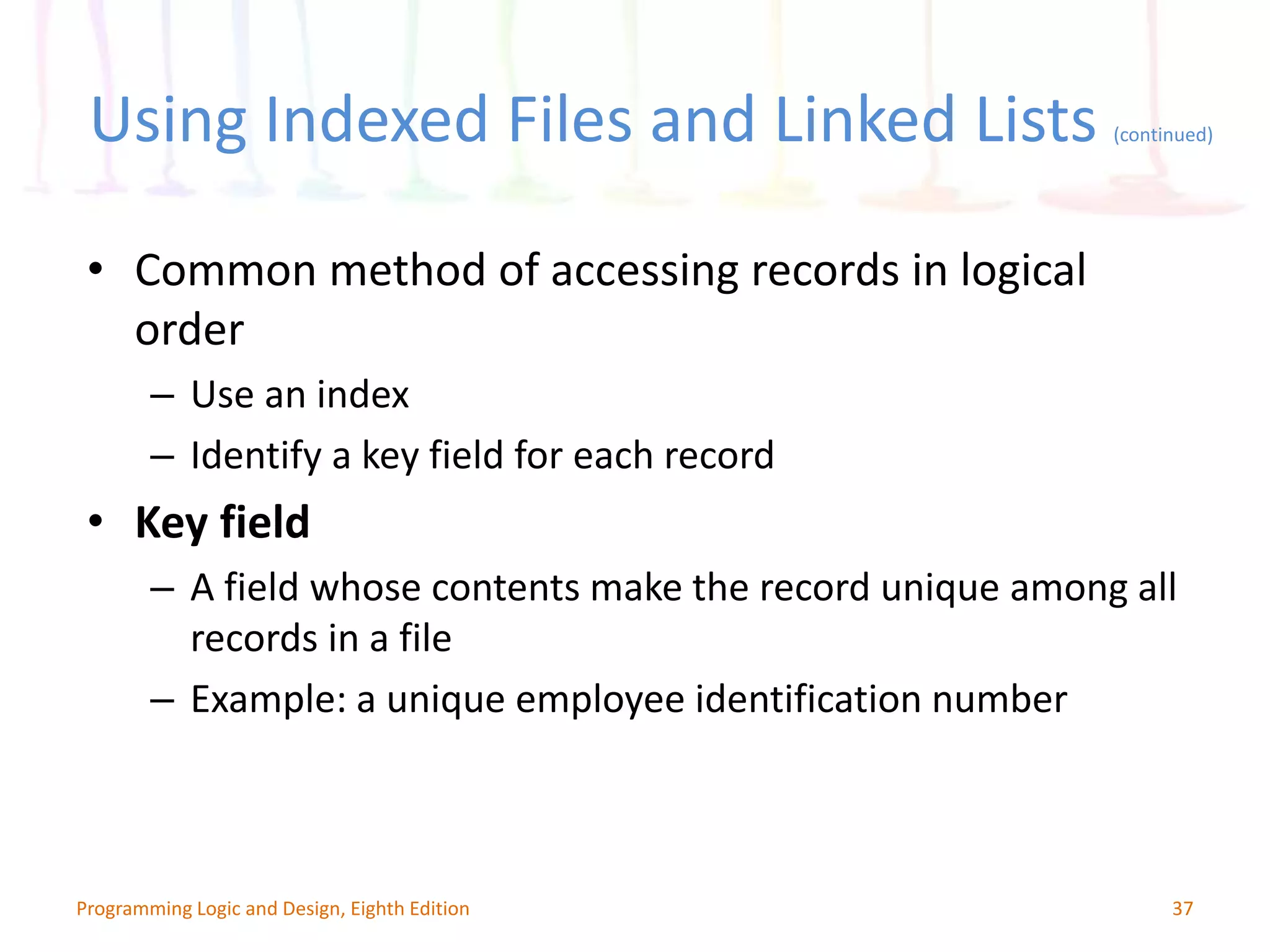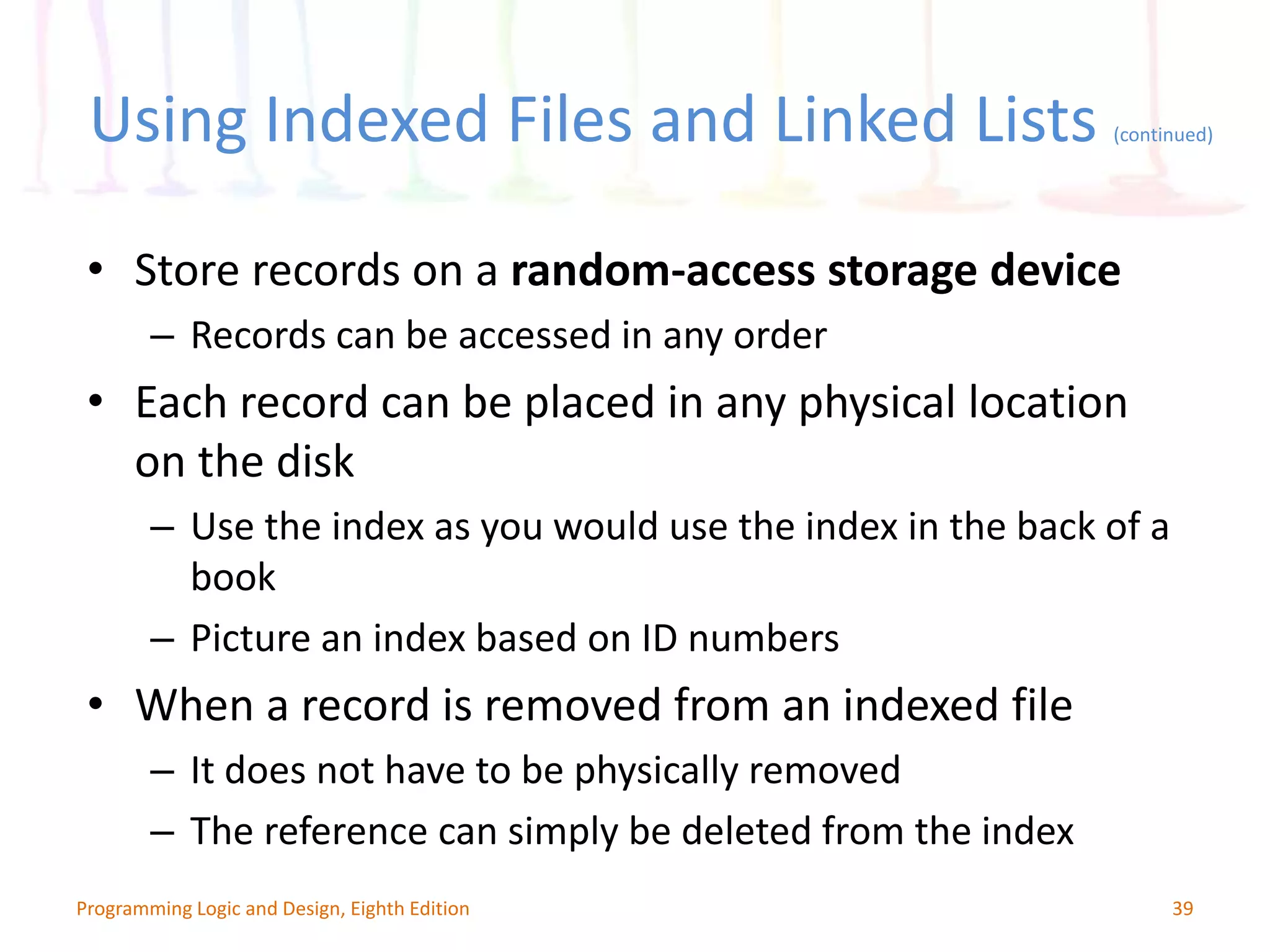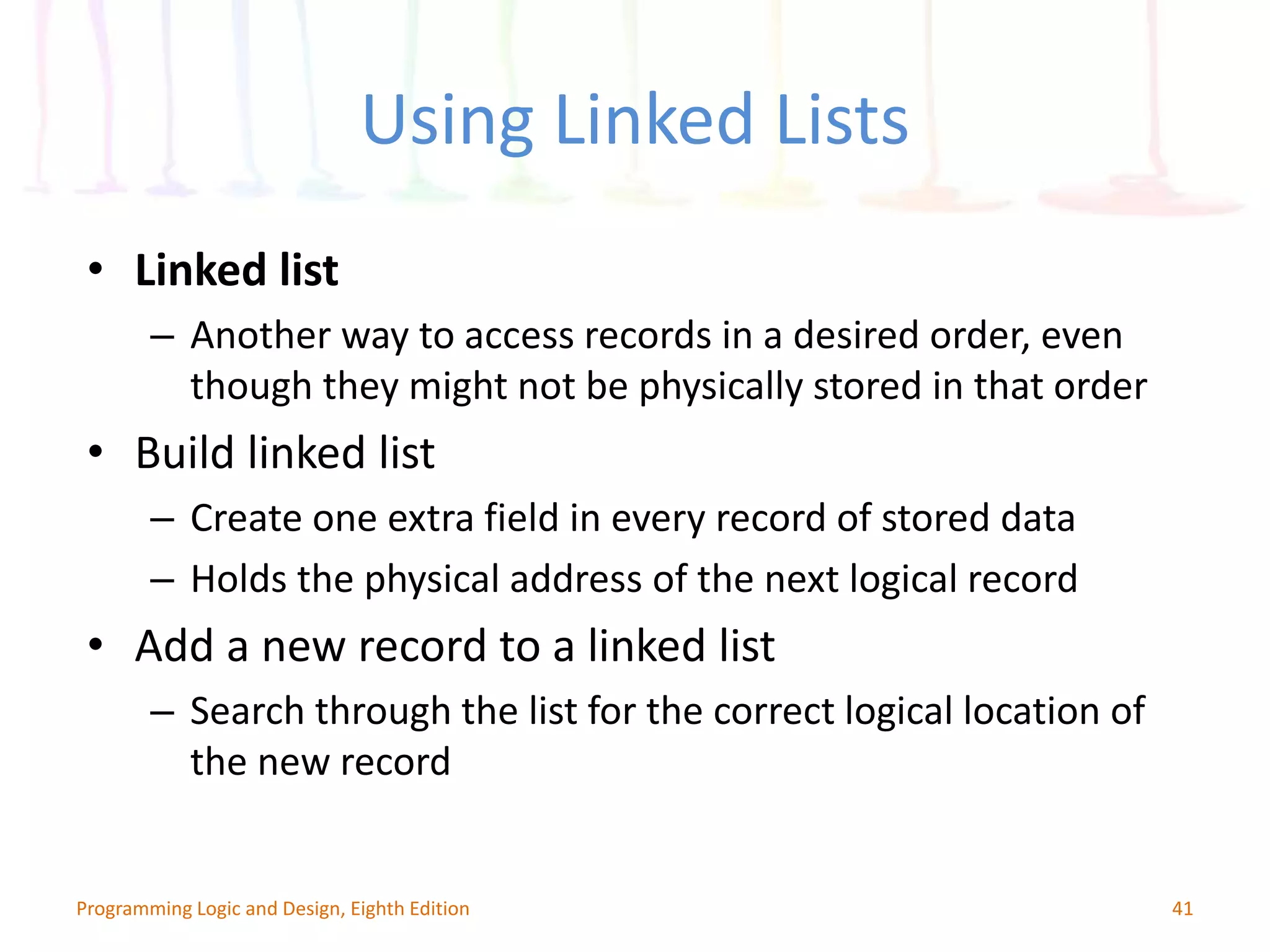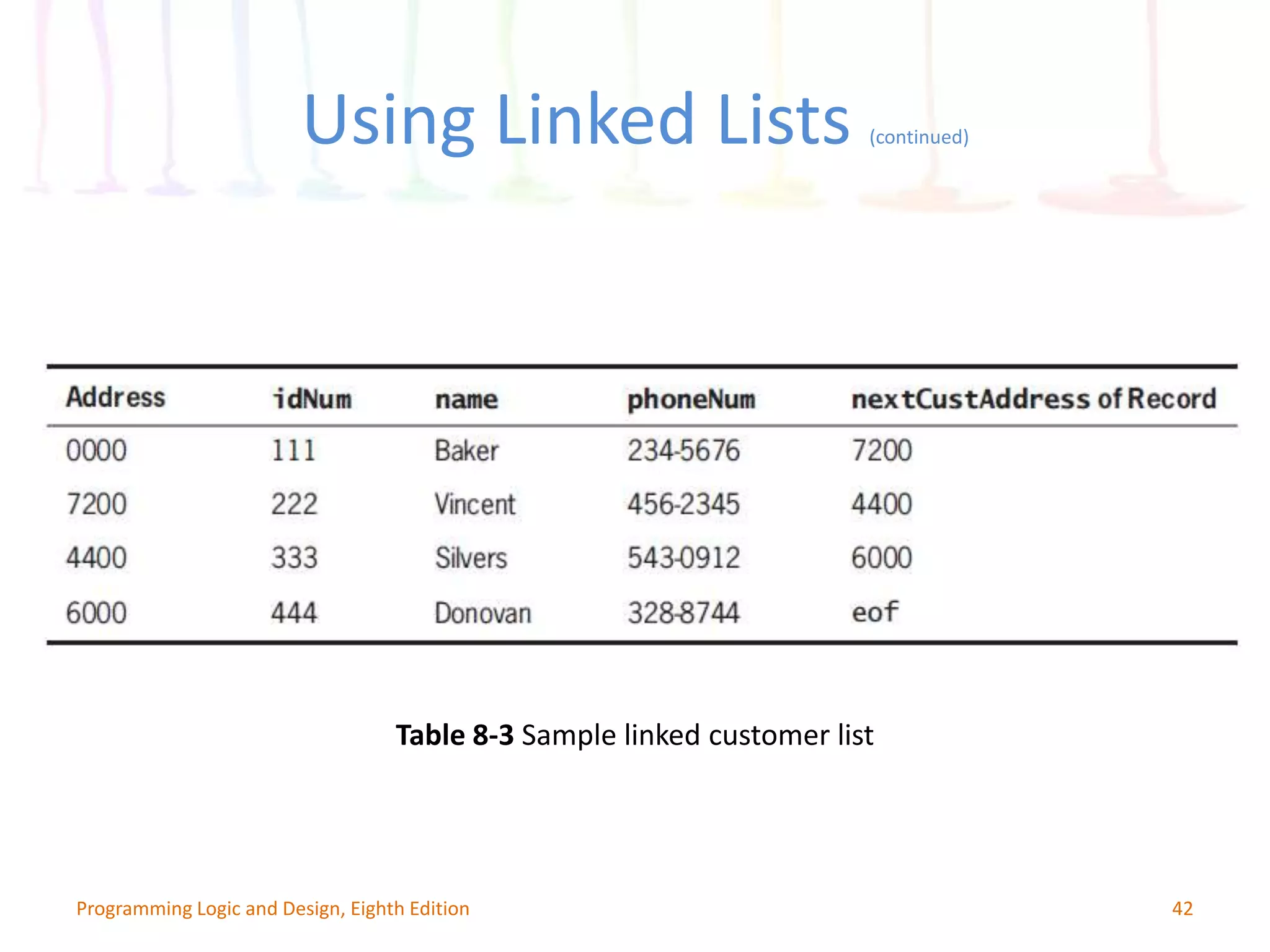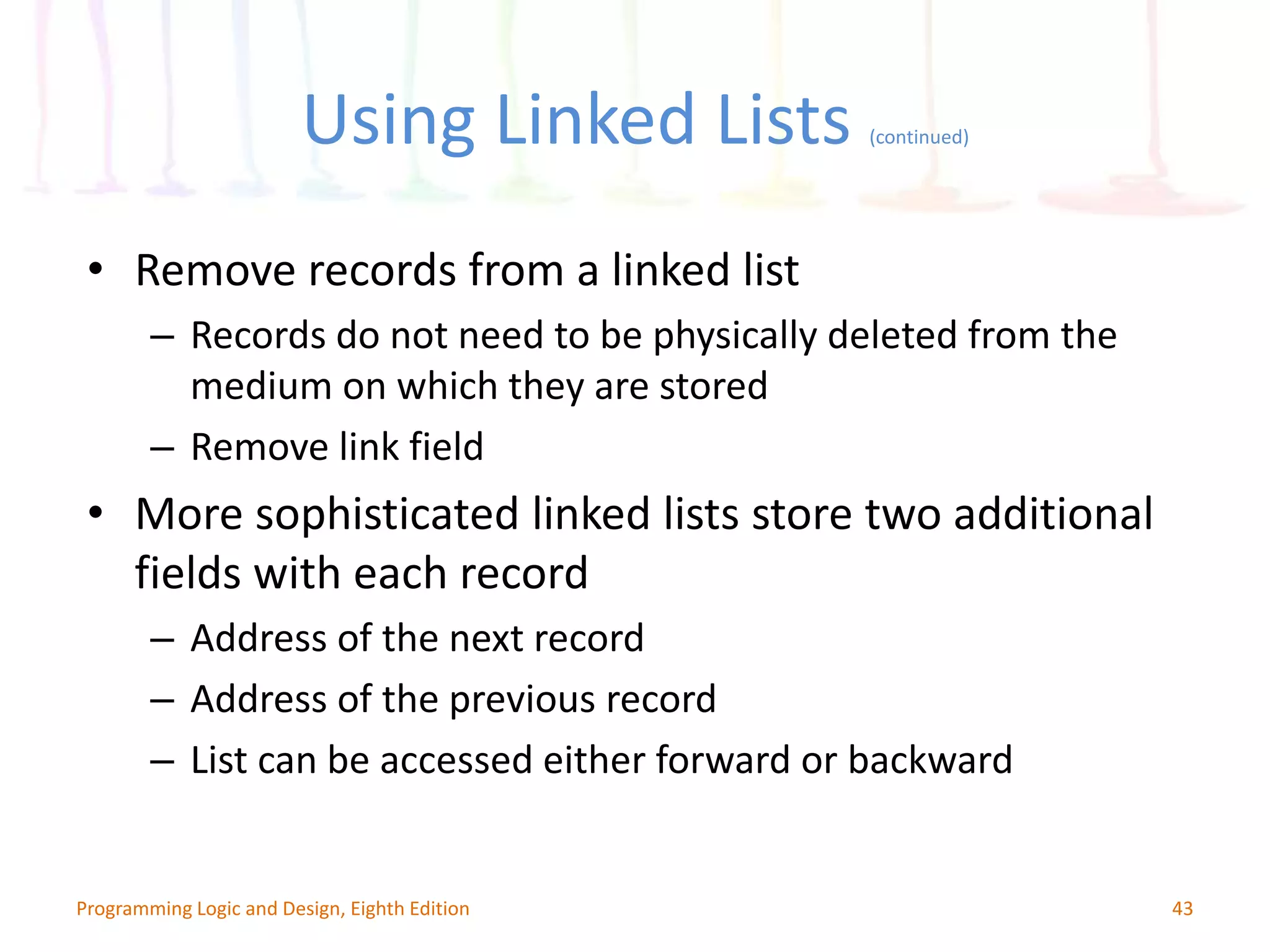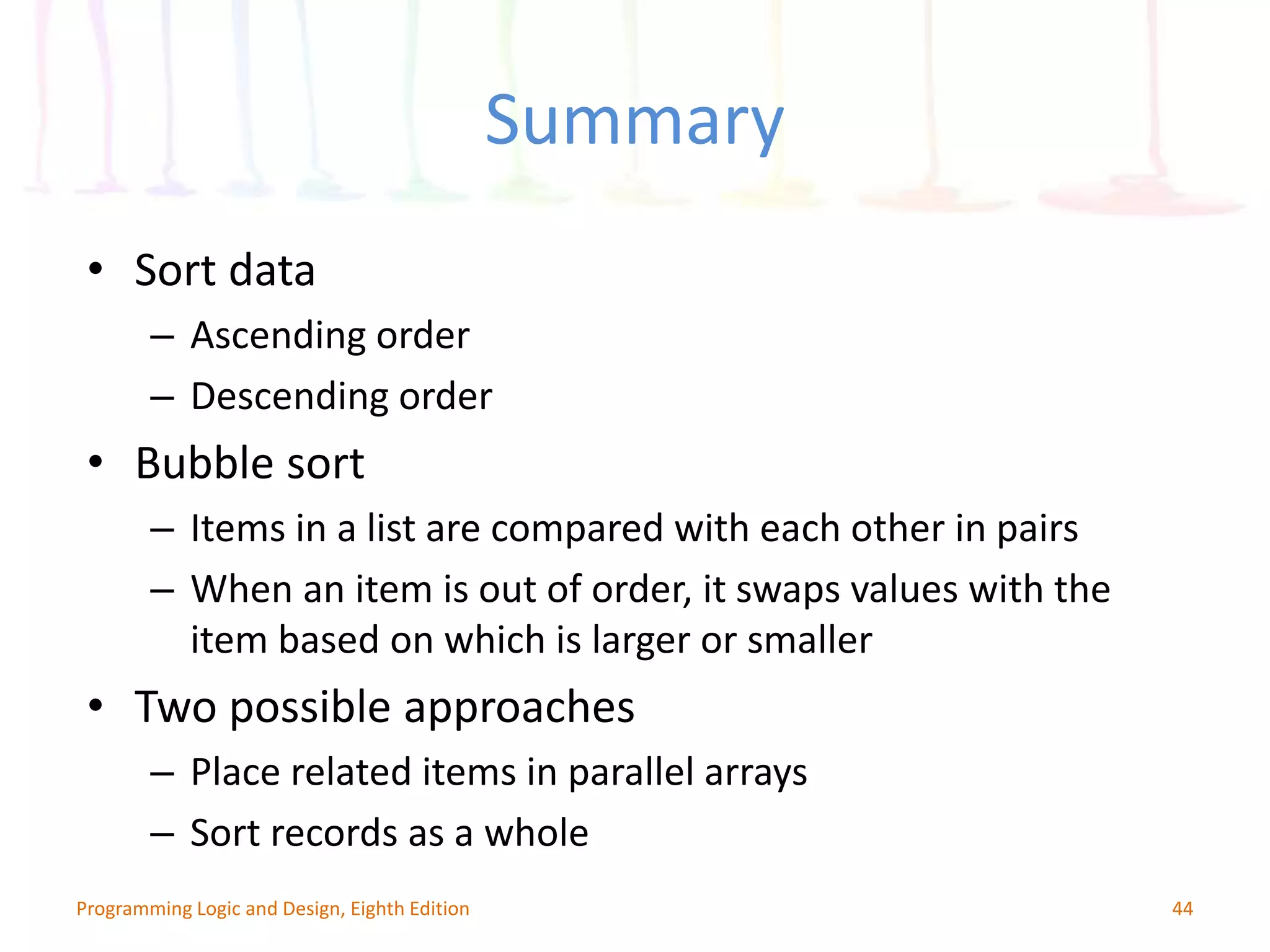This chapter discusses advanced data handling concepts such as sorting algorithms, multidimensional arrays, and non-sequential data structures. It covers bubble and insertion sort algorithms, how to sort records stored in parallel arrays or as whole structures, and using multidimensional arrays to organize data with multiple indexes. The chapter also explains indexed files and linked lists which allow accessing records in logical order rather than physical storage order through the use of indexes and linked record pointers.
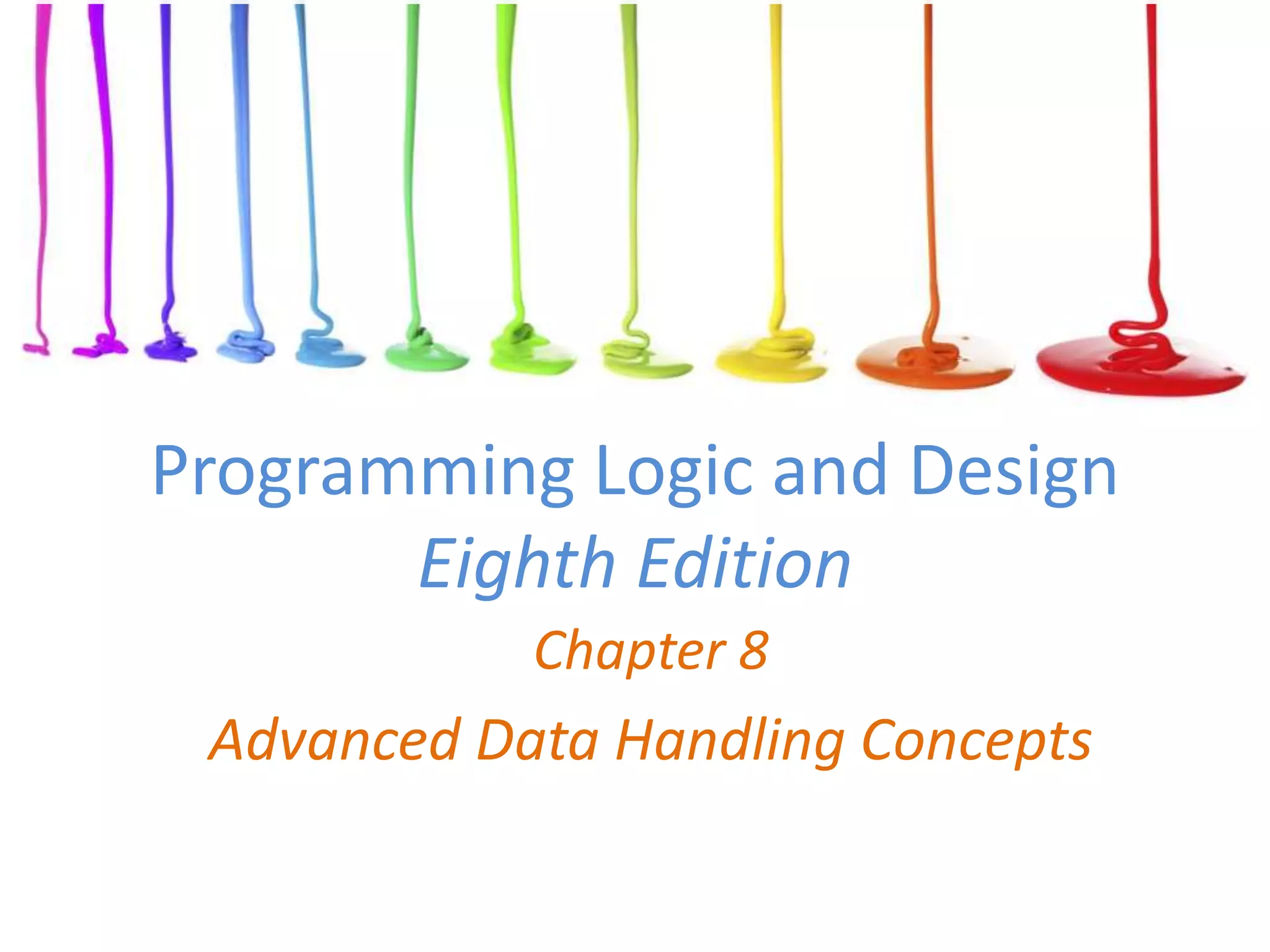
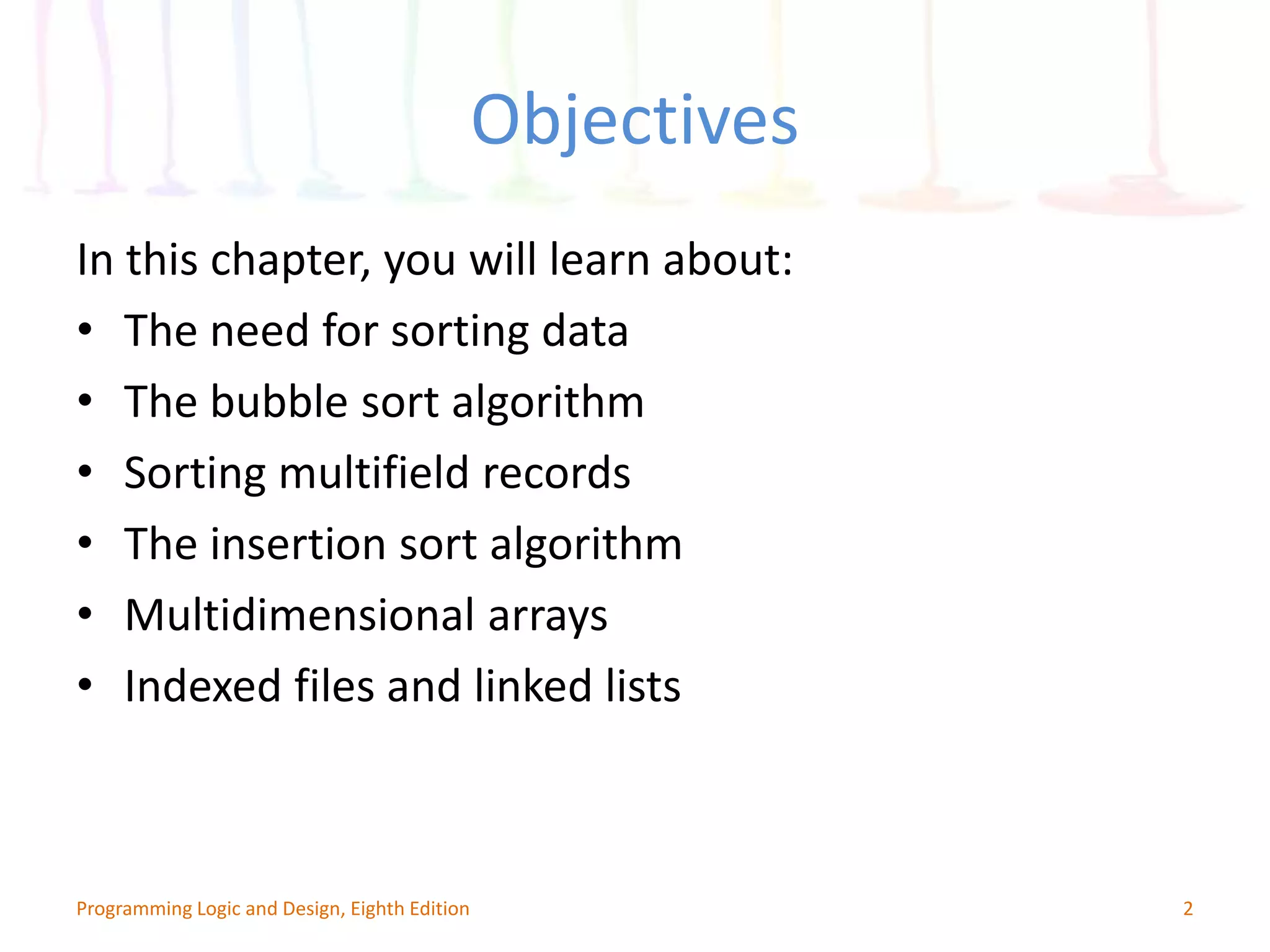

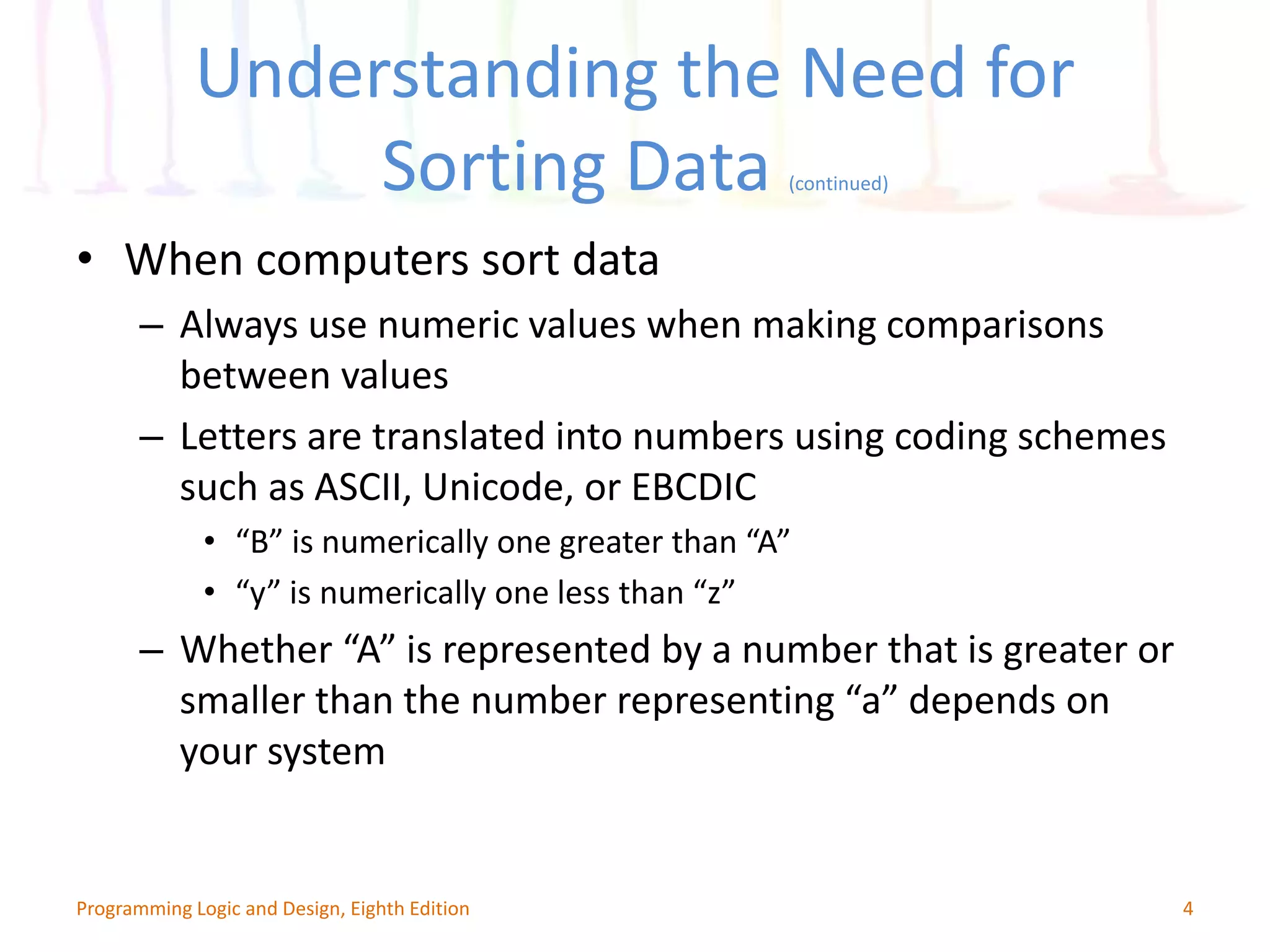
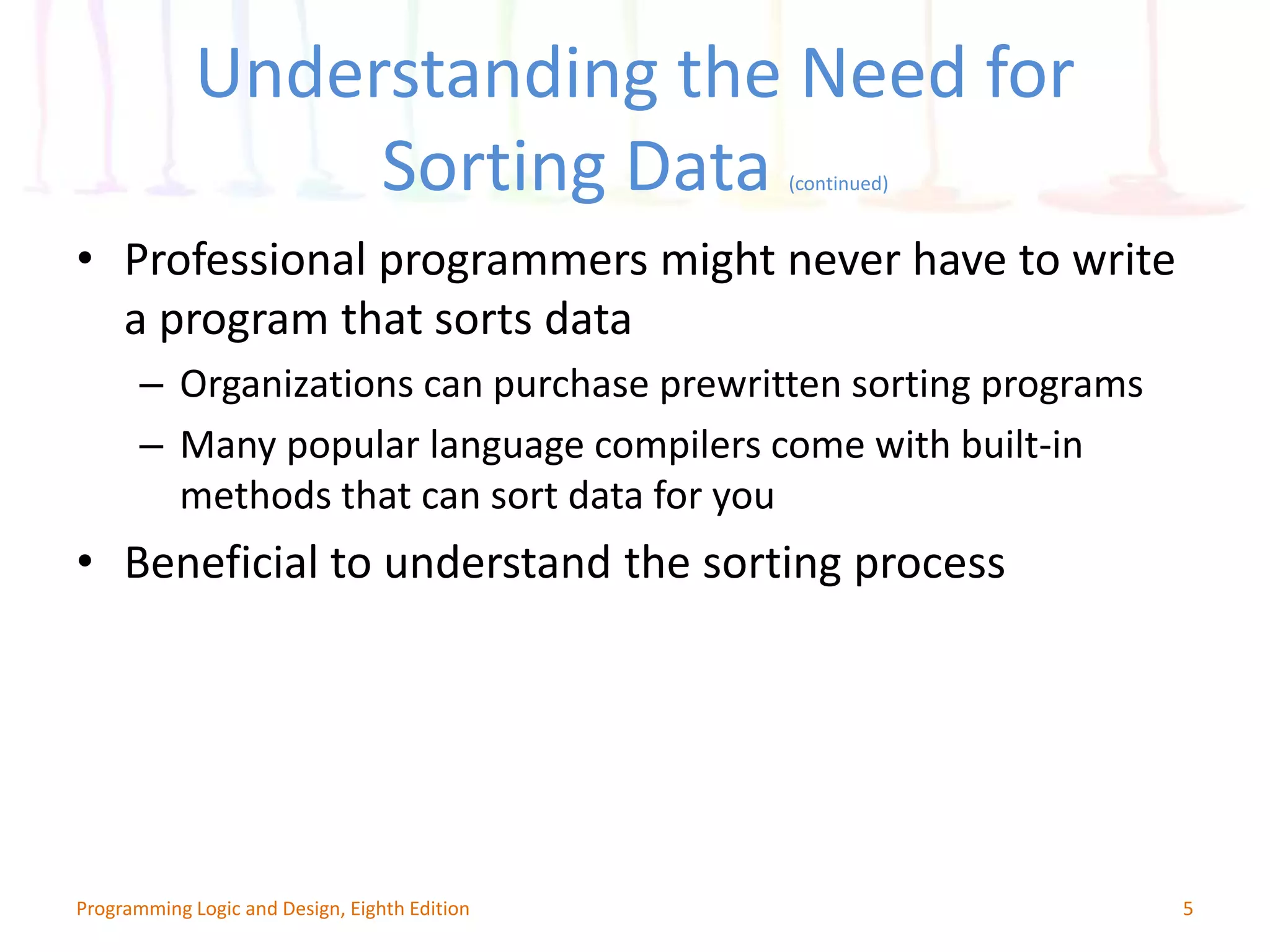
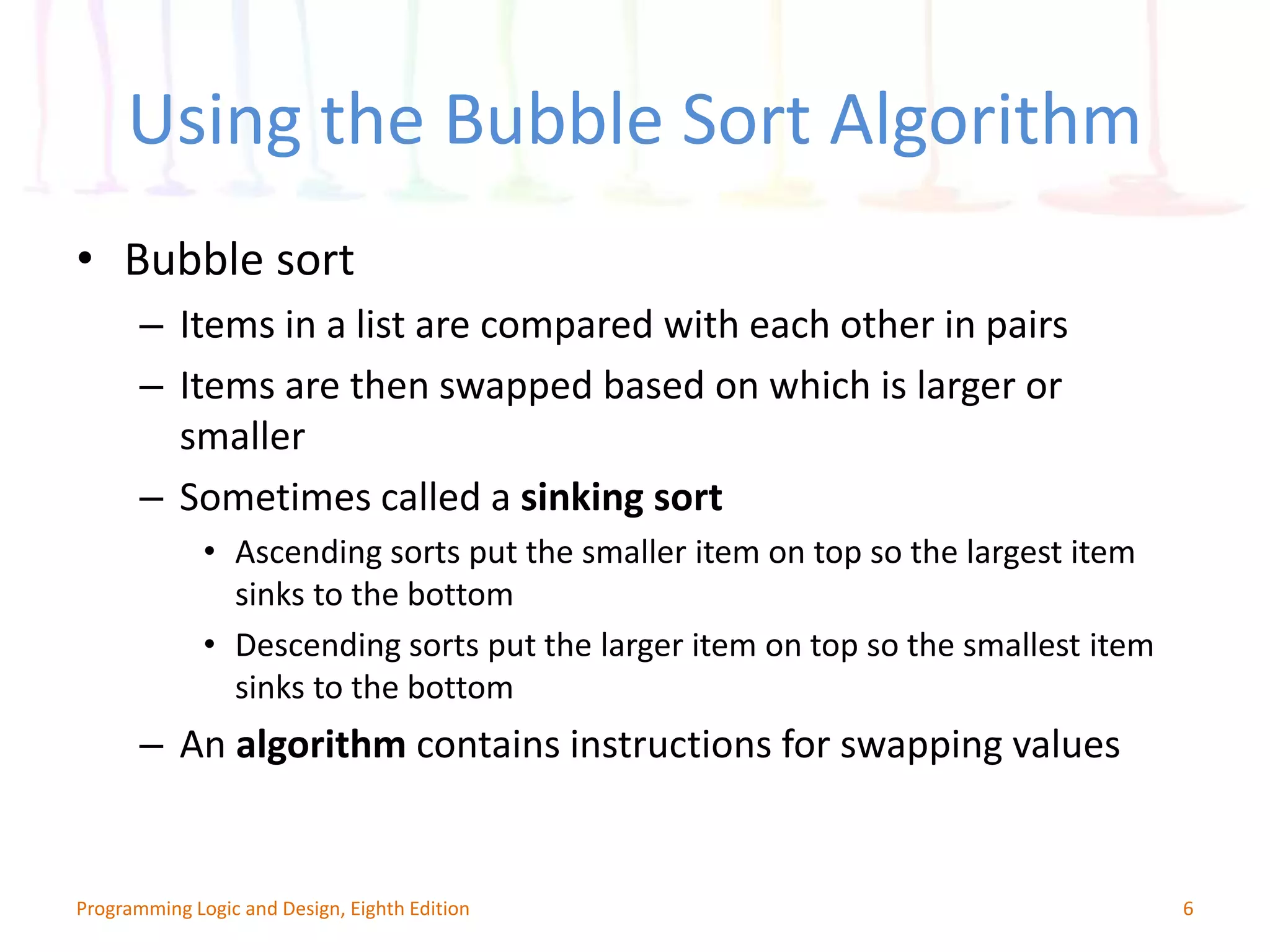
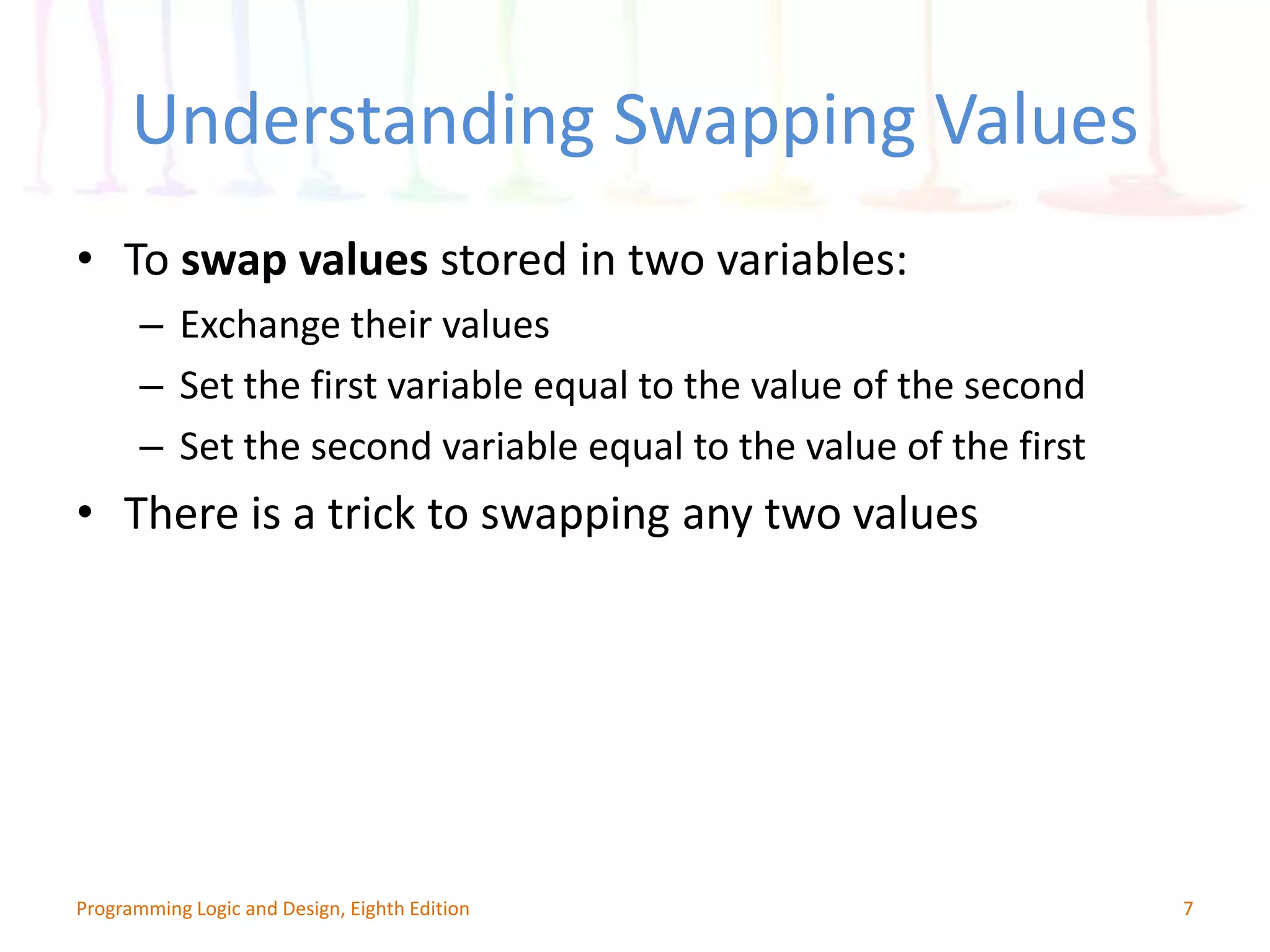
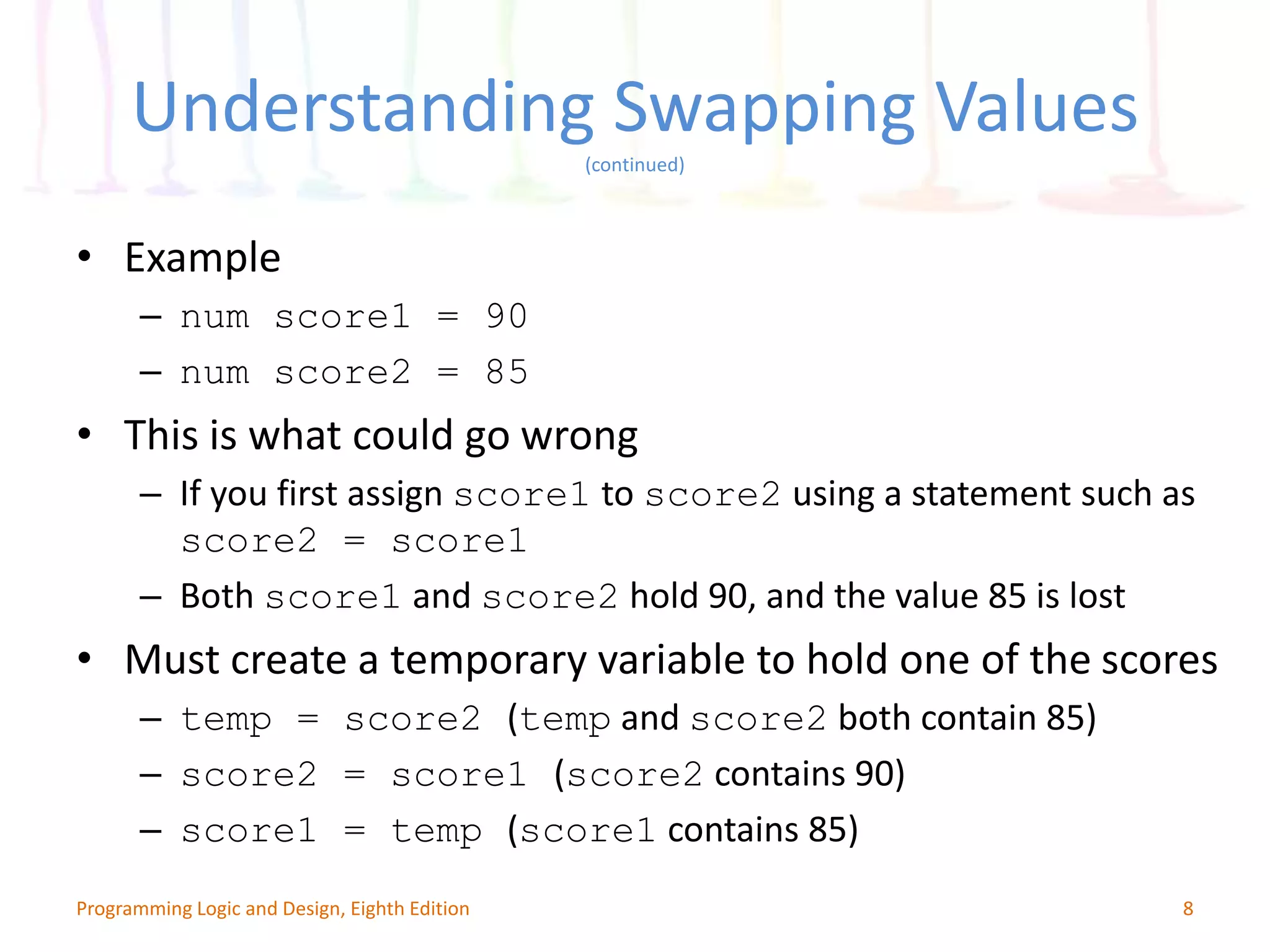
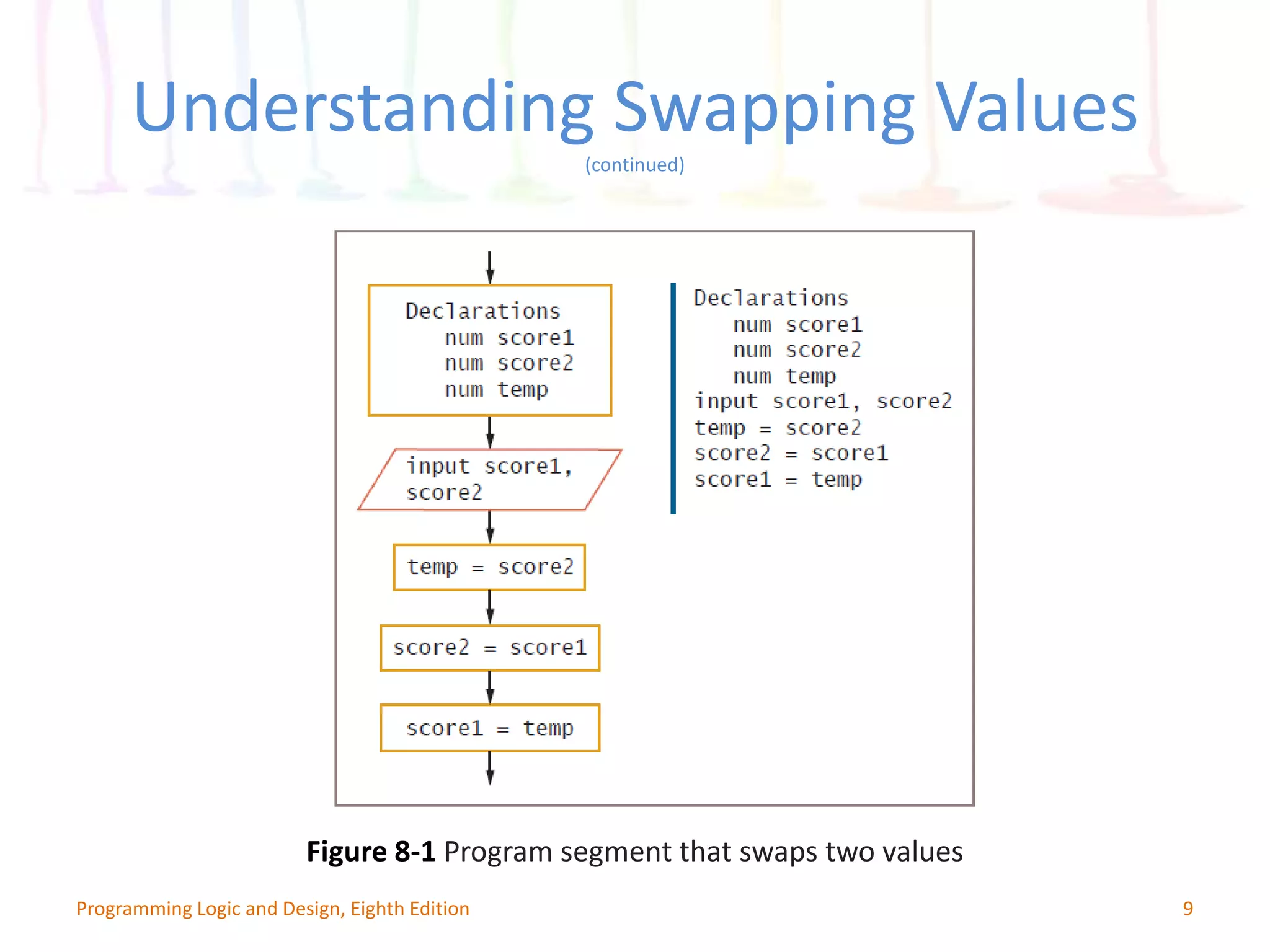
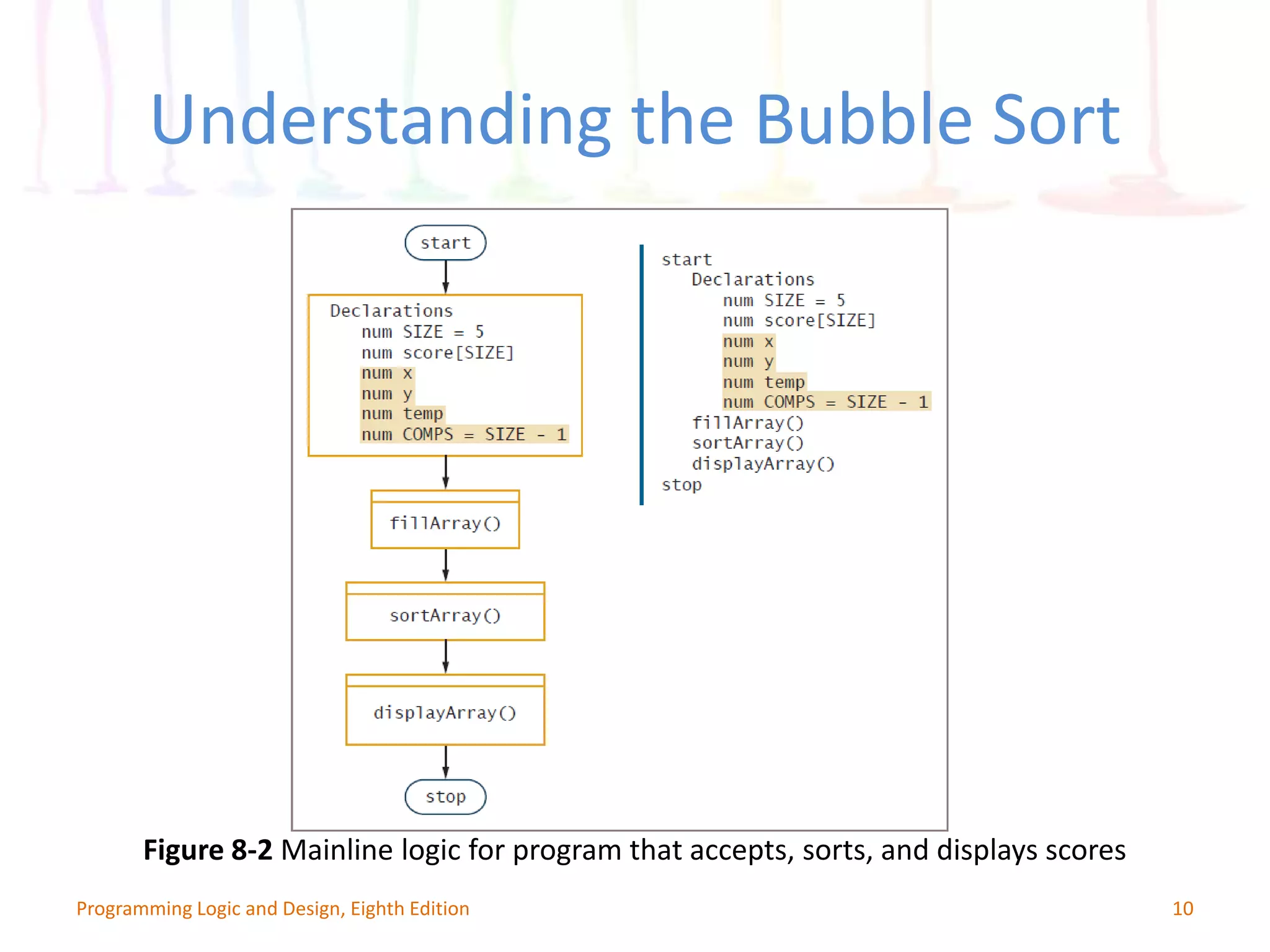
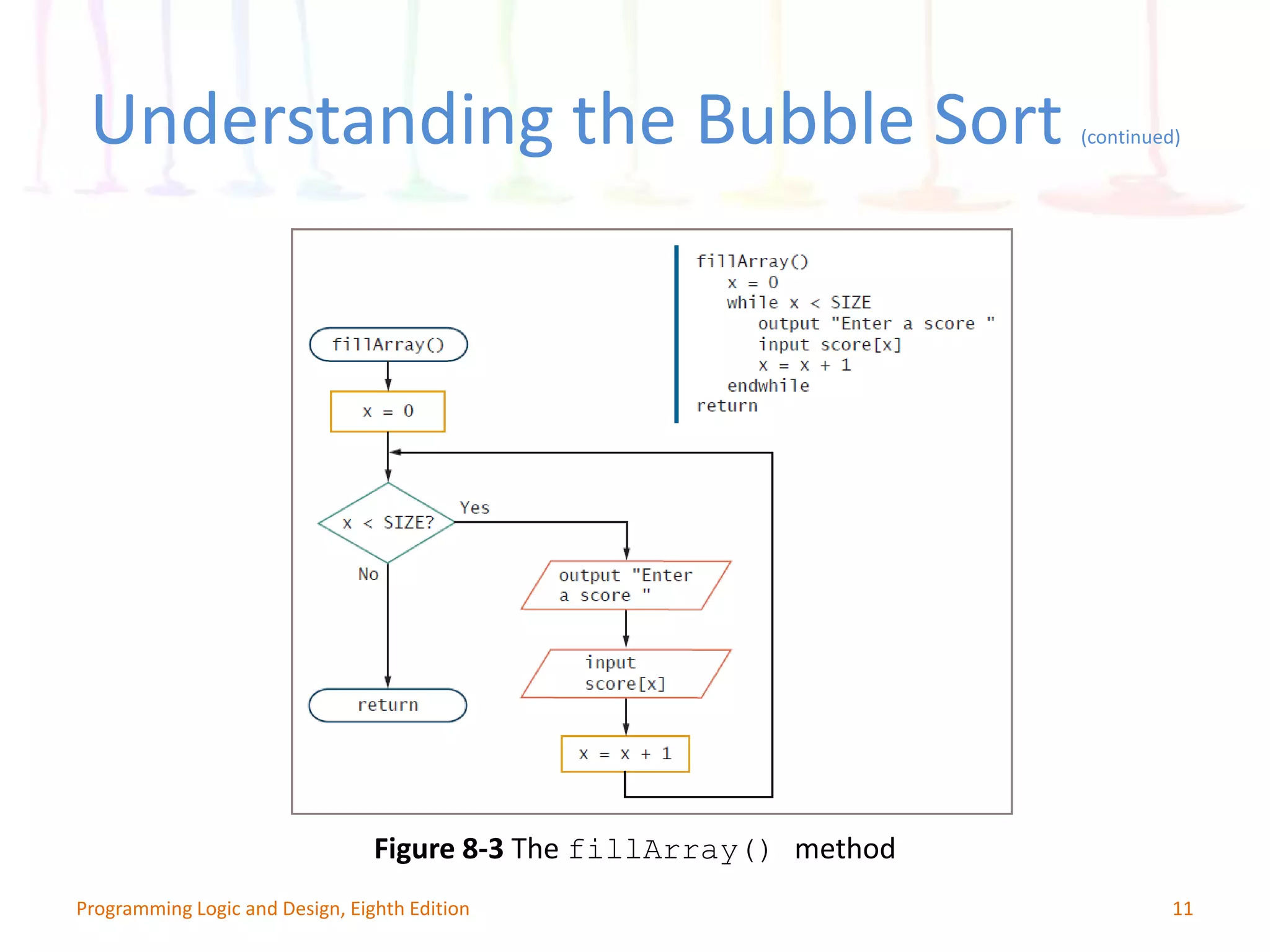
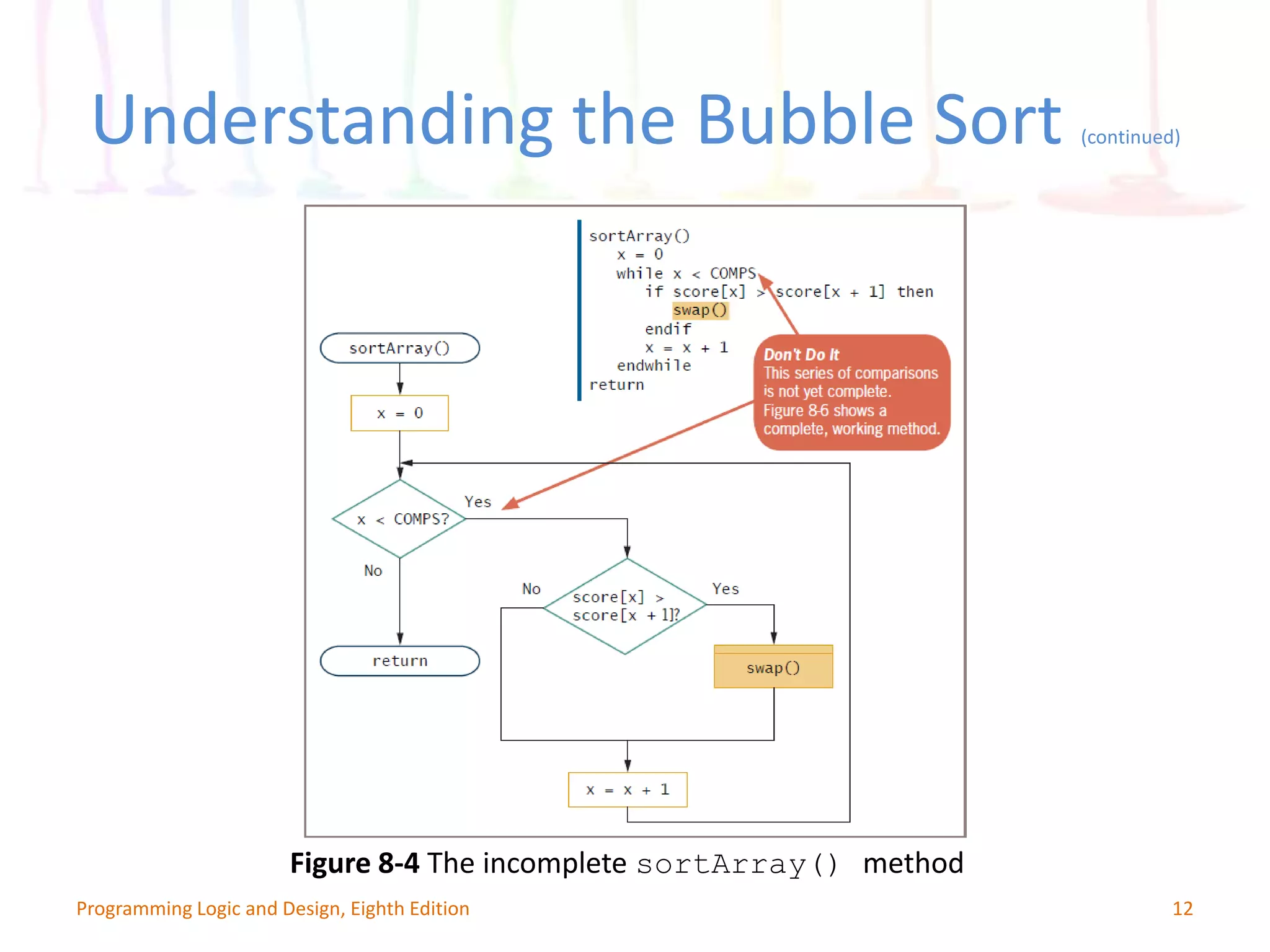

![• Initial list – score[0] = 90 – score[1] = 85 – score[2] = 65 – score[3] = 95 – score[4] = 75 14Programming Logic and Design, Eighth Edition • 85 and 90 are switched – score[0] = 85 – score[1] = 90 – score[2] = 65 – score[3] = 95 – score[4] = 75 • 90 and 65 are switched – score[0] = 85 – score[1] = 65 – score[2] = 90 – score[3] = 95 – score[4] = 75 • No change: 90 and 95 in order – score[0] = 85 – score[1] = 65 – score[2] = 90 – score[3] = 95 – score[4] = 75 Understanding the Bubble Sort (continued)](https://image.slidesharecdn.com/9781285776712ch08-161017000842/75/Programming-Logic-and-Design-Working-with-Data-14-2048.jpg)
![• 75 and 95 are switched – score[0] = 85 – score[1] = 65 – score[2] = 90 – score[3] = 75 – score[4] = 95 15Programming Logic and Design, Eighth Edition • Back to top: 65 and 85 switch – score[0] = 65 – score[1] = 85 – score[2] = 90 – score[3] = 75 – score[4] = 95 • No change: 90 and 75 in order – score[0] = 65 – score[1] = 85 – score[2] = 75 – score[3] = 90 – score[4] = 95 • 75 and 85 switch: sorted! – score[0] = 65 – score[1] = 75 – score[2] = 85 – score[3] = 90 – score[4] = 95 Understanding the Bubble Sort (continued)](https://image.slidesharecdn.com/9781285776712ch08-161017000842/75/Programming-Logic-and-Design-Working-with-Data-15-2048.jpg)

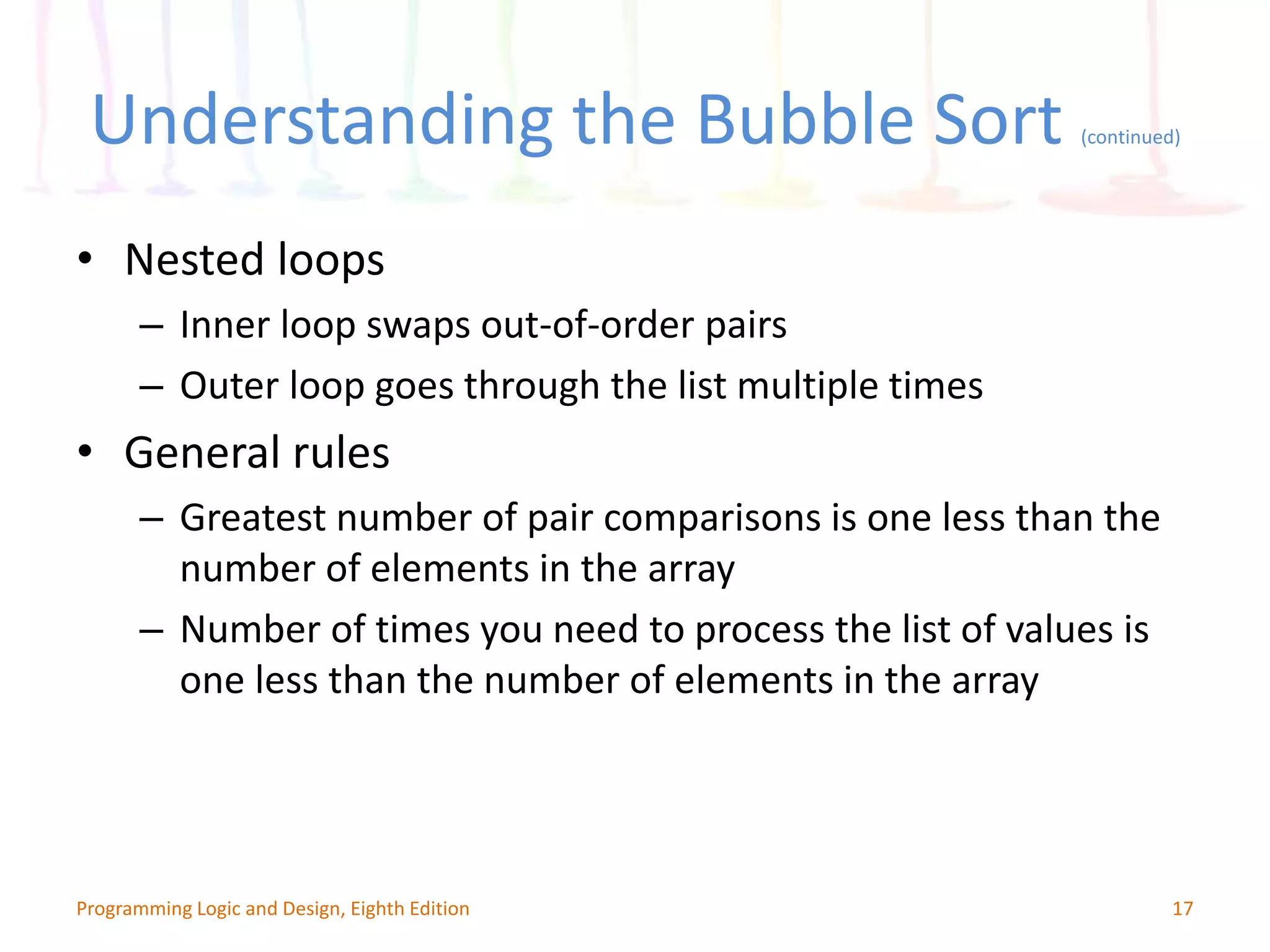


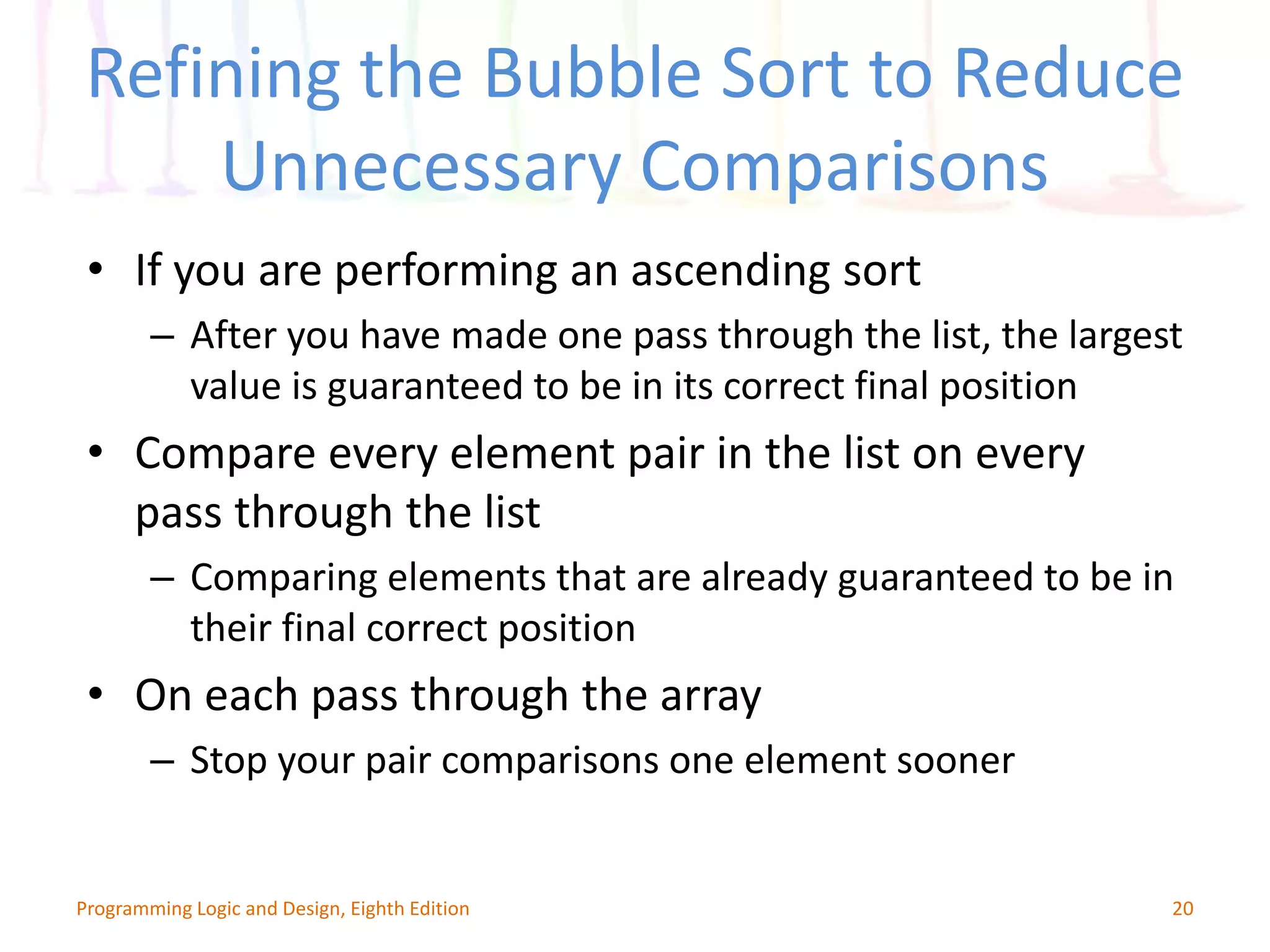
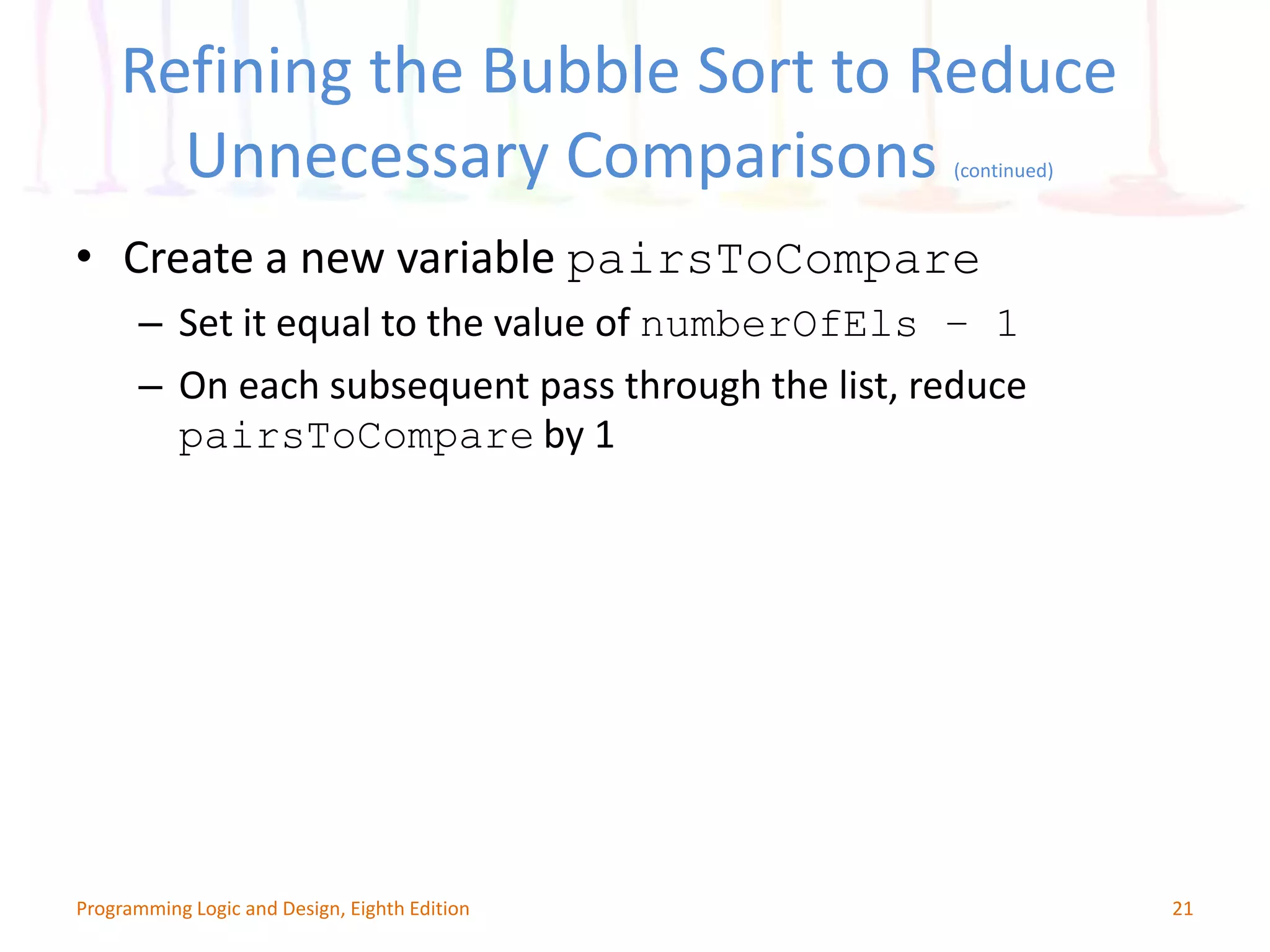
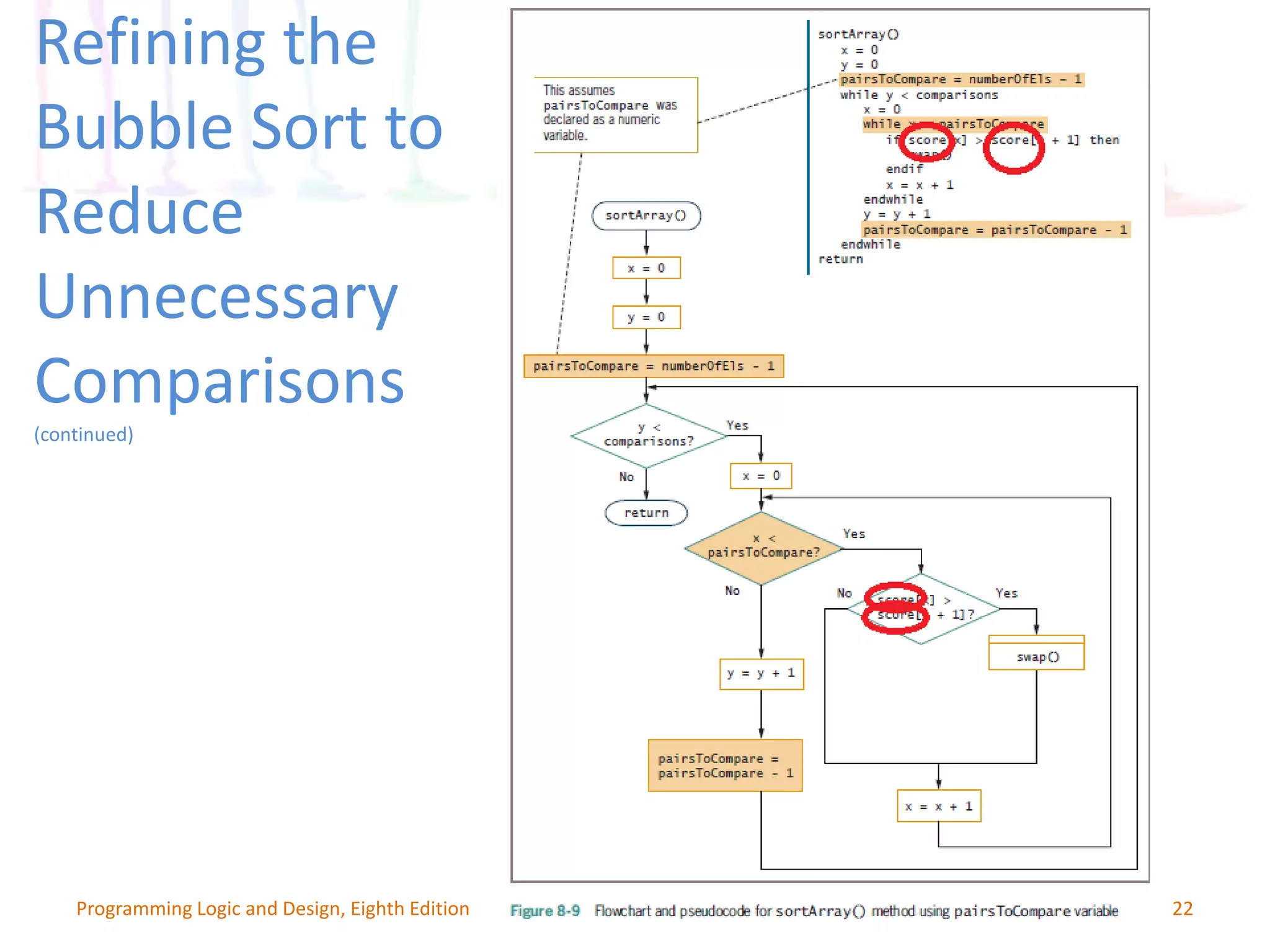
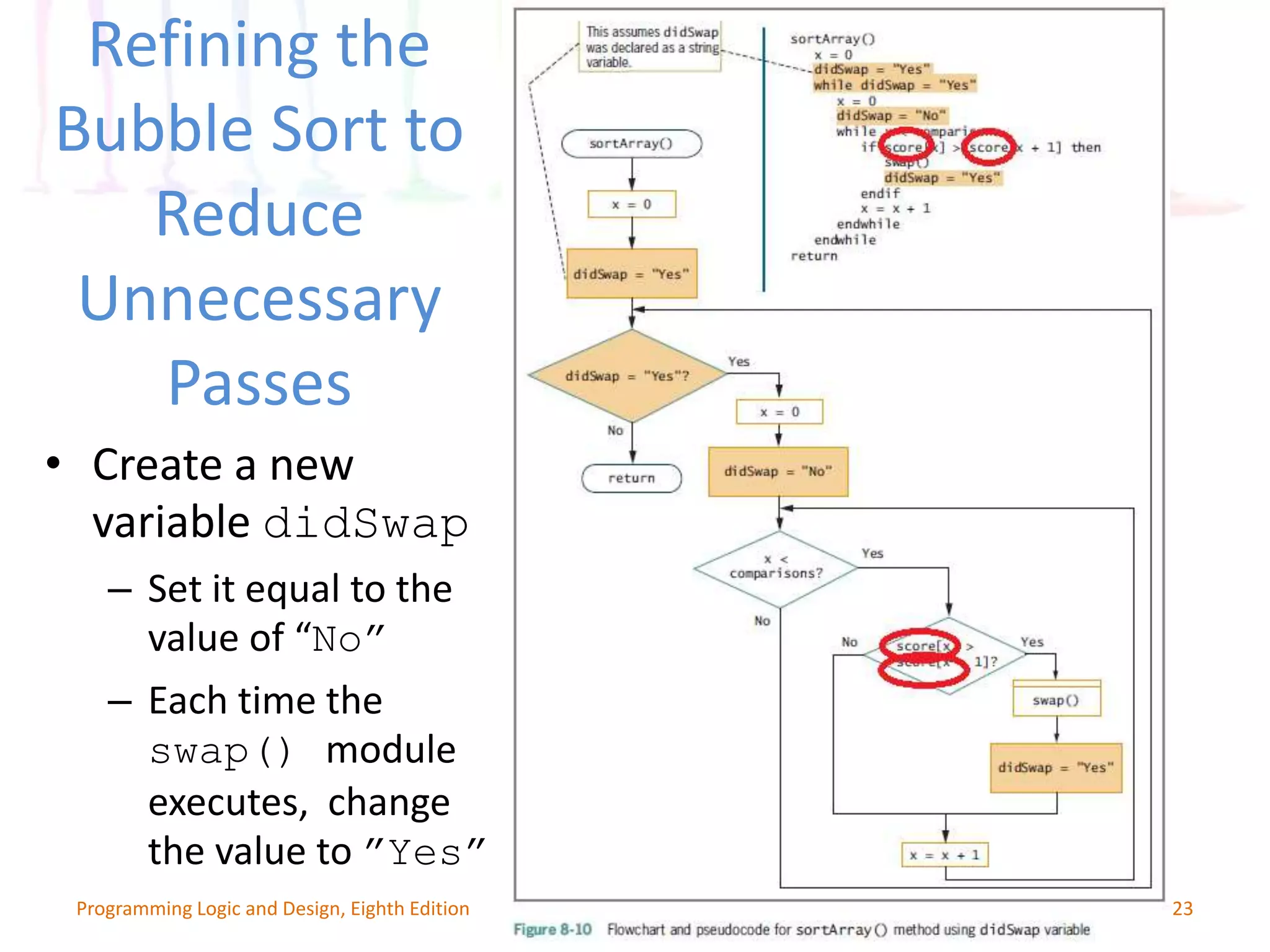
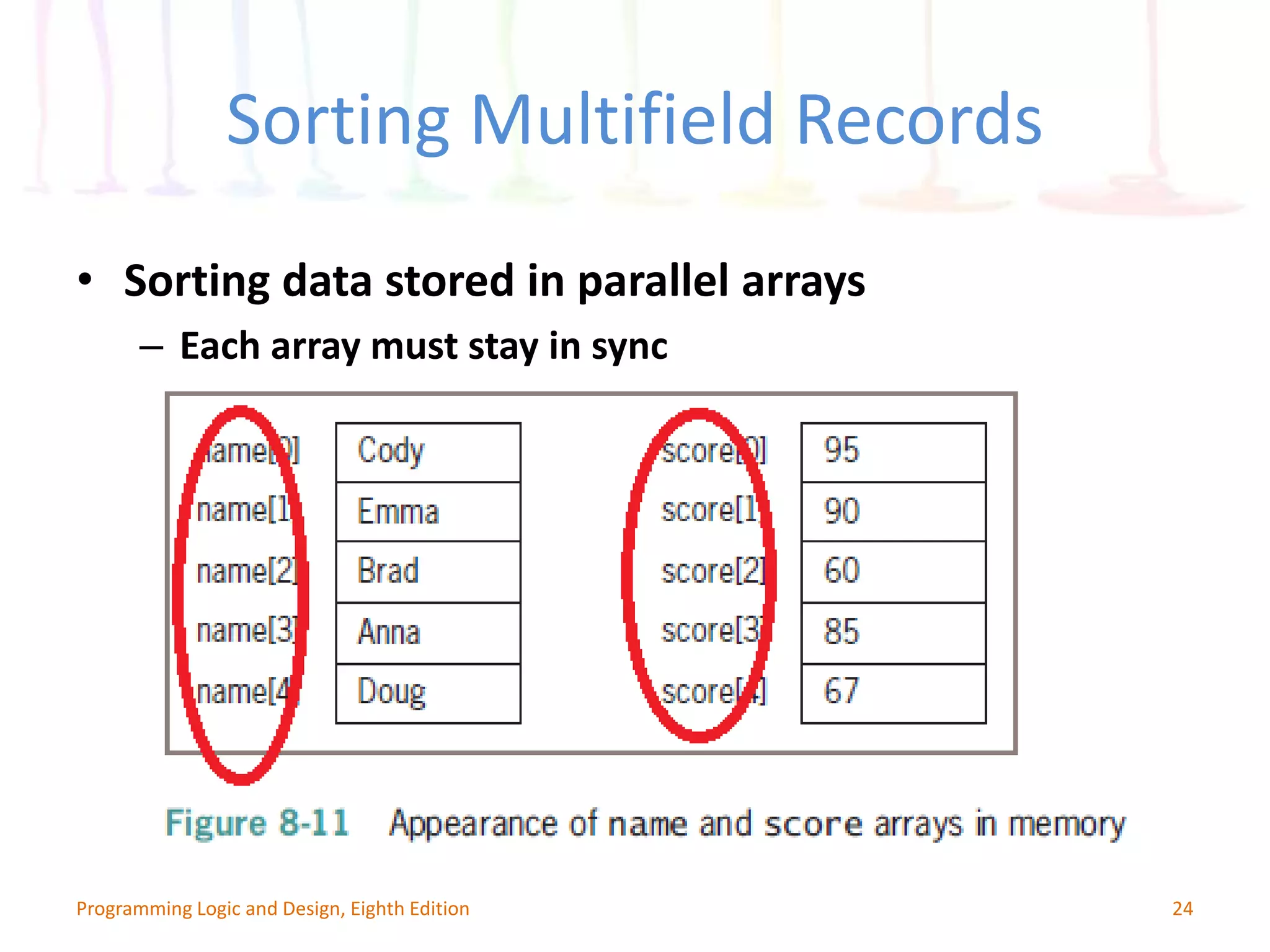

![Using the Insertion Sort Algorithm • Insertion sort – Data is examined and record is inserted into its proper place – All other records are moved down one slot Original Array First Pass Second Pass score[0] = 90 score[0] = 65 score[0] = 65 score[1] = 85 score[1] = 85 score[1] = 75 score[2] = 65 score[2] = 90 score[2] = 85 score[3] = 95 score[3] = 95 score[3] = 90 score[4] = 75 score[4] = 75 score[4] = 95 26Programming Logic and Design, Eighth Edition](https://image.slidesharecdn.com/9781285776712ch08-161017000842/75/Programming-Logic-and-Design-Working-with-Data-26-2048.jpg)
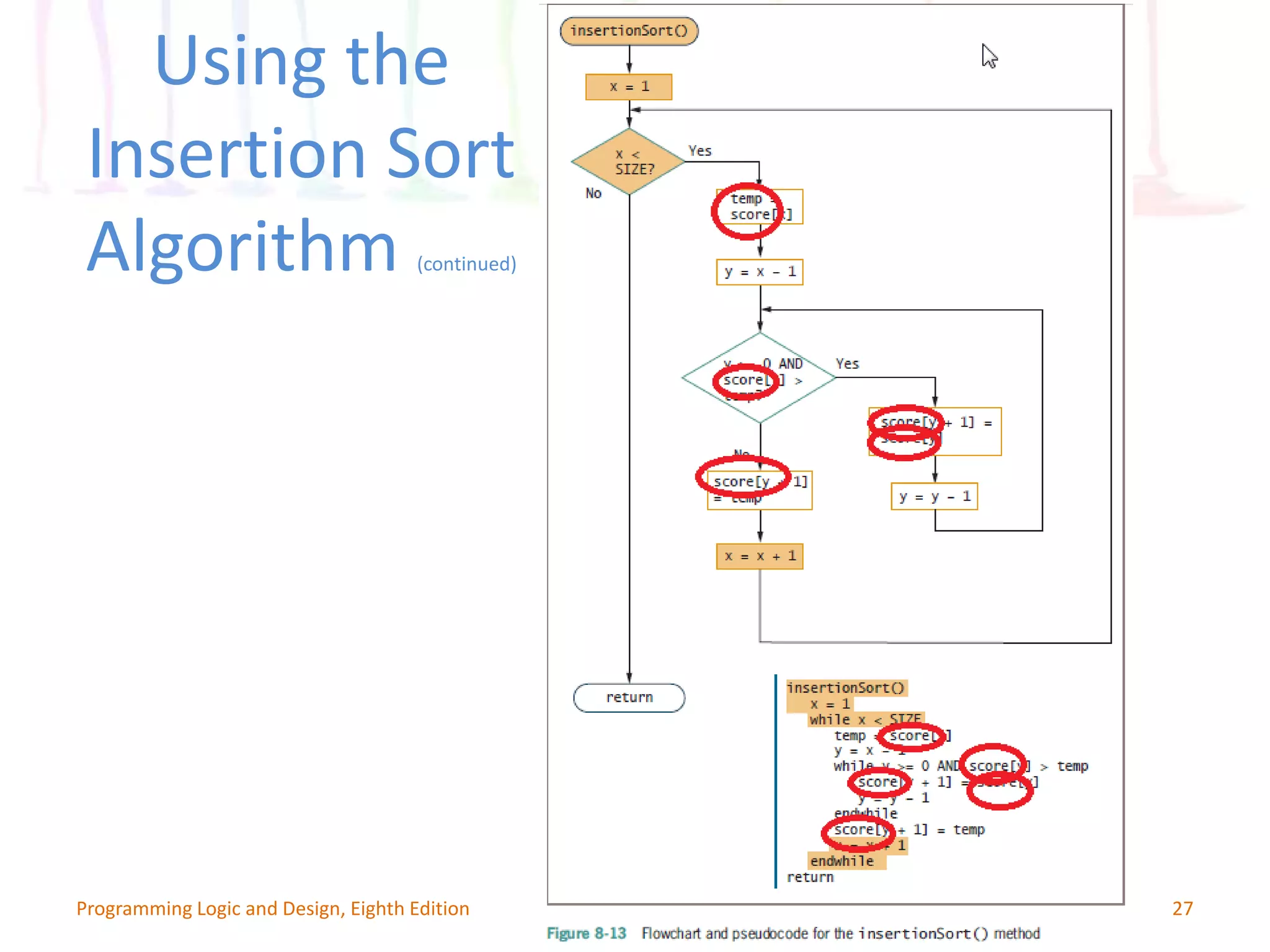


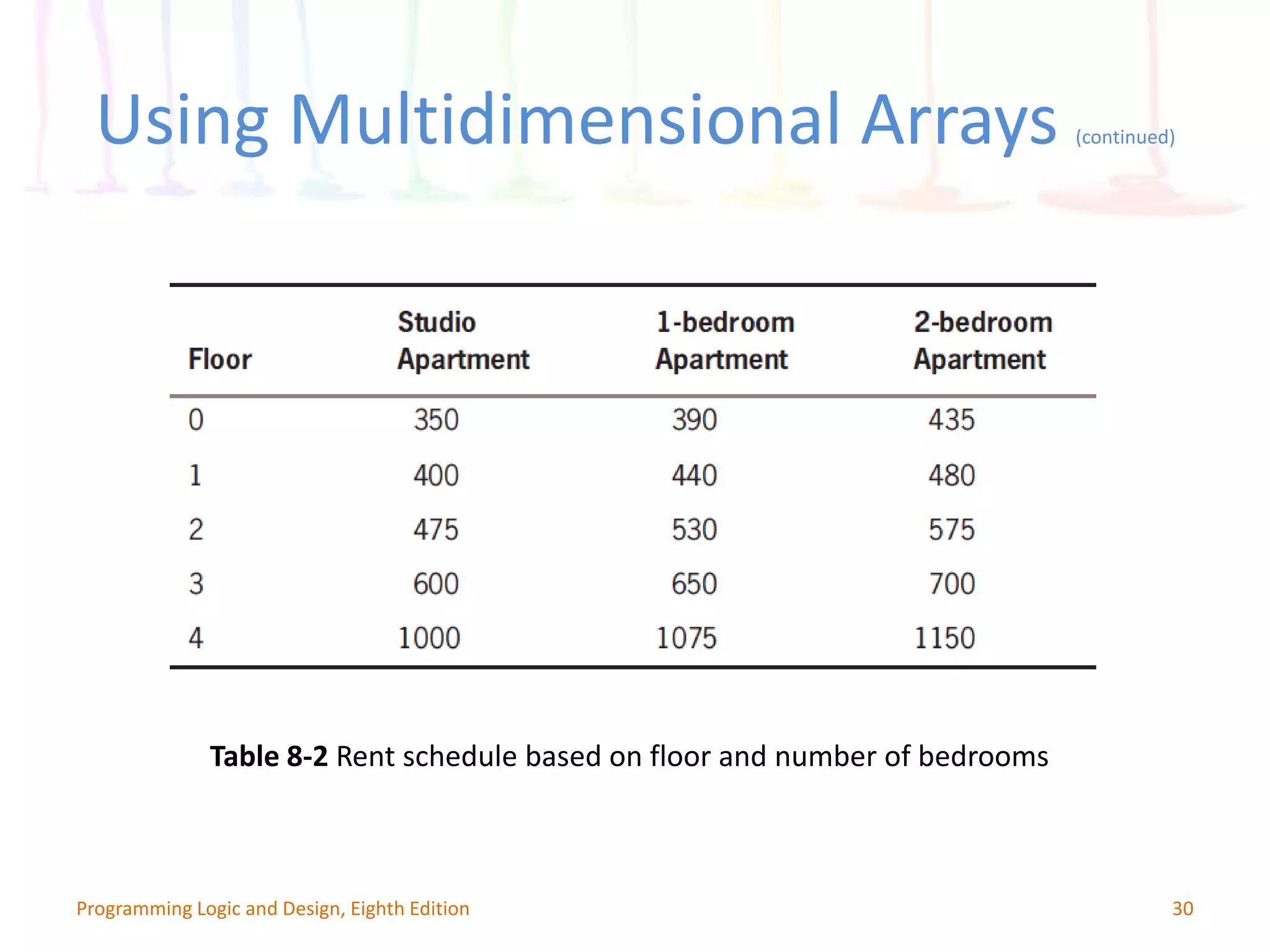
![Using Multidimensional Arrays (continued) 31Programming Logic and Design, Eighth Edition • Each element in a two-dimensional array requires two subscripts to reference it – Row and column – num RENT_BY_FLOOR_AND_BDRMS[5][3] = 0 1 2 0 350 390 435 1 400 440 480 2 475 530 575 3 600 650 700 4 1000 1075 1150](https://image.slidesharecdn.com/9781285776712ch08-161017000842/75/Programming-Logic-and-Design-Working-with-Data-31-2048.jpg)
![Using Multidimensional Arrays (continued) 32Programming Logic and Design, Eighth Edition • Declare a two-dimensional array – Type two sets of brackets after the array type and name – First square bracket holds the number of rows – Second square bracket holds the number of columns • Access a two-dimensional array value – First subscript represents the row – Second subscript represents the column – RENT_BY_FLOOR_AND_BDRMS[0][0] is 350](https://image.slidesharecdn.com/9781285776712ch08-161017000842/75/Programming-Logic-and-Design-Working-with-Data-32-2048.jpg)

![Using Multidimensional Arrays (continued) 34Programming Logic and Design, Eighth Edition • Three-dimensional arrays – Supported by many programming languages – Apartment building • Number of floors • Different numbers of bedrooms available in apartments on each floor • Building number • Examples – RENT_BY_3_FACTORS[floor][bedrooms] [building] – RENT_BY_3_FACTORS[0][1][2]](https://image.slidesharecdn.com/9781285776712ch08-161017000842/75/Programming-Logic-and-Design-Working-with-Data-34-2048.jpg)

